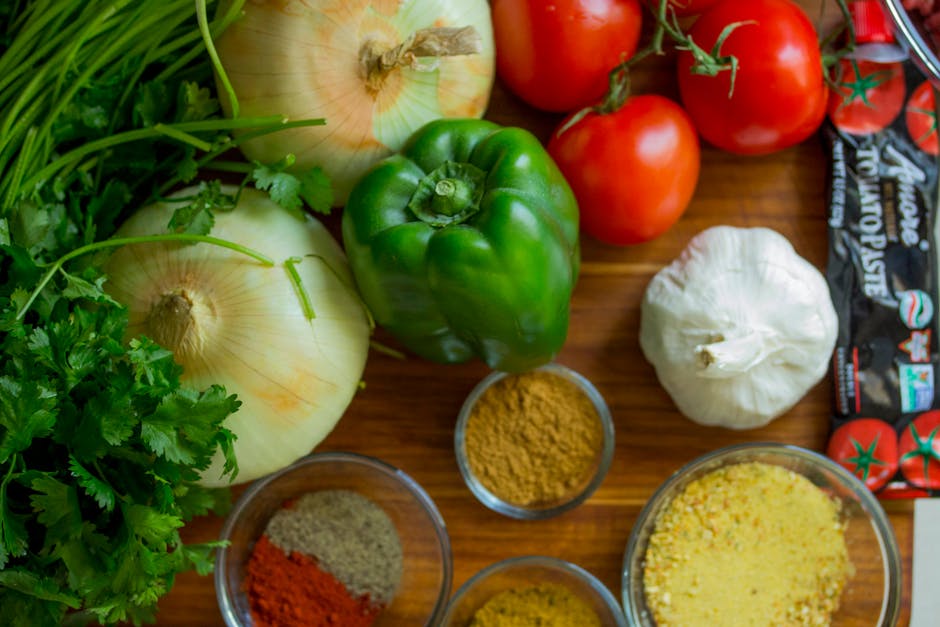The Time Traveler's Kitchen: Discover Eccentric Dishes from History
Have you ever wondered what medieval banquets tasted like or what ancient Romans savored? The Time Traveler's Kitchen invites you on an adventure through culinary history, exploring eccentric dishes that have long been forgotten. This article dives deep into the vibrant tapestry of flavors that defined different epochs, offering unique insights into historical recipes, cooking techniques, and ingredients that once shaped cultures. Whether you’re a cooking enthusiast or simply curious about bygone culinary traditions, you’ll learn how to source unusual ingredients, recreate ancient flavors, and adapt these fascinating dishes for your modern palate. Let’s bridge the gap between the past and the present in the most delicious way possible!
Unearthing the Culinary Treasures of Time
History is often defined by its food—a reflection of the culture, resources, and innovations of the time. Yet, many culinary treasures have been lost to time, overshadowed by modern convenience foods and fleeting trends. As we journey through the annals of culinary history, we’ll delve into forgotten recipes and cooking techniques, uncovering gems that tantalize the taste buds and stir the imagination.
The Influence of Ancient Civilizations
From the spice-laden banquets of the Middle Ages to the simplicity of ancient Roman fare, each civilization offers a unique视角 on what was once eaten. To fully appreciate this, we must recognize the significant influences of geography, trade, and available resources. For instance, ingredients from distant lands were either rare and celebrated or common staples, which significantly affected the culinary practices around them.
One example is how the introduction of spices from Asia transformed European cooking in the 15th century. Imagine enriching your dishes with flavors that have traveled thousands of miles and evolved throughout centuries. Even today, that journey can inspire your cooking, something beautifully articulated in our piece on culinary cartography.
Exploring Ancient Recipes
Recreating historical dishes may seem daunting, but it can also be remarkably rewarding. Let’s explore a few ancient recipes that can easily be adapted for modern home cooks.
1. Roman Garum Sauce: The Umami of Antiquity
Garum was a fermented fish sauce beloved by the Romans. This umami-packed condiment was used in countless dishes, much like soy sauce today. To recreate a modern version, consider using preserved anchovies blended with olive oil, garlic, and herbs. The simplicity carries hints of a rich past.
2. Medieval Pottage: A Dish for the Ages

Pottage was a staple in medieval kitchens, made by simmering grains, vegetables, and meats. Today, reinvent this dish with seasonal vegetables and legumes while adding spices like saffron or rosemary to elevate the flavors. Check out our article on transforming leftovers for tips on maximizing flavor and minimizing waste.
Finding Ingredients in the Modern Era

Traveling back in time means sourcing ingredients that may not easily be found in your local supermarket. Foraging, farmers' markets, and specialty stores may hold the key, offering items that echo historical flavors.
Sourcing Ancient Grains

Ancient grains like farro, spelt, and quinoa have made a resurgence, enriching our diets with their distinct textures and flavors. When exploring these grains, consider their historical relevance and how they can fit into contemporary recipes. The journey to understanding these ingredients is beautifully detailed in our article on embracing ancient grains.
Spices from History

Perhaps you're curious about how spices such as saffron, nutmeg, or black pepper played a role in historical cooking. These spices revolutionized tastes and culinary techniques, often being worth their weight in gold. Seek out quality sources for fresh spices in your area to truly capture the old-world allure.
Adapting Ancient Flavors for Modern Palates

As we connect with the flavors of yesteryear, it's important to keep modern tastes in mind. Here are a few tips for successfully adapting historic recipes while retaining their essence:
Balance Traditional and Contemporary Techniques

Breaking down complex historical recipes into more straightforward preparations can enhance accessibility without losing authenticity. Consider the stews of the past—slow-cooked and layered with flavors. Today’s busy schedules might require a pressure cooker or slow cooker to achieve similar results with less prep time.
Infusing Flavor with a Twist

Experimenting with alternative cooking methods can enhance ancient recipes. For example, smoking or fermenting ingredients adds depth, reminiscent of historical techniques. To learn more about these innovative approaches, see our article on mastering fermentation.
Culinary Inspections: A Taste of the Past

One might say, cooking is a form of time travel—it’s immersion in culture served on a plate. But what about enjoying the history while keeping the experience lively?
Cook with Your Senses

Culinary experiences are not just about taste. Engage all of your senses—sight, sound, smell, and touch—while preparing meals. Our post on unlocking flavor through sensory cooking can guide you on how to make each mealtime an experience rich with emotional history.
Elevating Your Kitchen Experience

Just as the taste of food can evoke memories, the surrounding atmosphere can transform your cooking experience. Create a setting that honors tradition while being inviting and modern. Lighting, music, and aroma play key roles in how we perceive flavor.
Curating a Historical Playlist

Consider creating a playlist that reflects the era you’re cooking from. The sounds of classical music or traditional folk tunes can transport you to a medieval banquet or a bustling Roman market. Explore how music affects your cooking for enhanced flavors during meal prep.
Fusions of Flavors: Cross-Cultural Recipes

The beauty of cooking is its versatility. You can fuse historical recipes with contemporary techniques to create innovative dishes. For example, combine Roman garum with Asian dumplings for a truly unique culinary experience.
Final Thoughts
As you venture into the world of historical cuisine, remember that cooking is a journey of exploration. Every sauté, simmer, and bake is a conversation with the past. Embrace the flavors that once were, while adapting them for your culinary adventures today.
By seeking out ancient ingredients, understanding the cooking techniques from different eras, and recreating unique recipe ideas, you will not only enjoy diverse meals but also carry forward the stories behind them into your modern kitchen.
So, roll up your sleeves, grab your most adventurous spirit, and dive into The Time Traveler's Kitchen. Your taste buds—and your dinner guests—will thank you!







